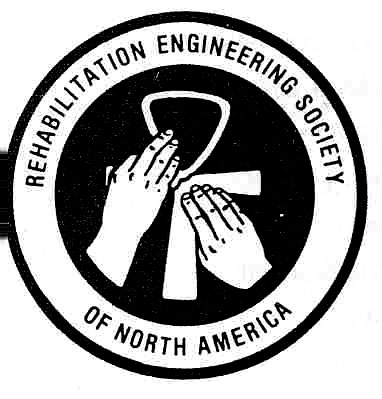The Rehabilitation Engineering Society of North America (RESNA) represents a joining together of persons who participate in the development and delivery of technology to people with disabilities. The goal of RESNA is to improve the quality of life of handicapped persons in all possible ways; from recognition of their needs, through design, development, evaluation, and production of devices both internal and external, and modification of housing and transportation environments, to enhancing the effectiveness of the delivery system to meet the needs of the disabled wherever they may be. RESNA and the Rehabilitation Engineering Delivery SystemThe Rehabilitation Engineering Delivery System is complex and many faceted. It involves many kinds of professionals and institutions and includes, most importantly, the person with disability and his/her family. To be successful, all components of this system must function effectively both as individual units and as an interconnected network. RESNA in its structure will mirror the Rehabilitation Engineering Delivery System. As a society it will be concerned with the total problem of making technology available to persons with disabilities. Some of its task groups will provide professional forums for experts concerned with their own role in the delivery process, while other committees will reflect the system as a whole and the interaction of its components. The professionals in the Rehabilitation Engineering Delivery System may be listed as follows:
This list above, in many ways defines the Rehabilitation Engineering Society of North America. First, it describes the persons who are eligible for membership. Their credentials, activities, and interests vary widely, but the one thing they share in common is a deep concern for making the benefits of technology available to persons with disability. Thus, Rehabilitation Engineering - the application of science and technology to improving the quality of life of persons with disabilities - is the rallying point of RESNA. Each of the person-types represented has an equal responsibility in the overall delivery process. The process starts with the needs of the disabled person and ends when his/her needs are met. Each person plays a unique role and the system itself will not work if any part does not function effectively. RESNA is concerned with the entire system, and to be effective it must build its membership with all persons in the system. Secondly, the above list essentially defines elements of the Rehabilitation Engineering delivery system. A basic concept in systems theory is that the inter-relationship between the components of the system is as important as are the elements themselves. While the parts of the system are easily recognized, the inter-relationships or connections are difficult to define. In fact, most of the barriers to the delivery of Rehabilitation Engineering services are found in the connections or lack thereof between the elements of the system. A major goal of RESNA is to deal with these interactions and find ways to remove the barriers that inhibit the overall system from functioning effectively. For example, one of the major barriers is the lack of information and a system to make information available to the many persons within the delivery system. Many factors are affected by the lack of information or access to it, including definition of needs, research priorities, legislation, funding, availability of devices with associated indications for applicability and training. This is an area in which RESNA can and will contribute. As one looks at the Rehabilitation Engineering Delivery System as a whole, and at the same time examines the activities and problems associated with his/her individual specialty, he/she cannot help but identify many action areas wherein RESNA can be effective. These range from national planning and funding support at the highest federal levels to the specific application of technology for one person with a disability, wherever he/she may be. The list will be long and important. As the Society becomes organized into sub-task groups and committees, action plans will evolve to cover the needs. As of this time, no one group, including ourselves, is in a position to draw the blueprint for the Society. It will become clearer when the membership itself organizes itself to deal with the issues it believes most important and of manageable size. But we do have a vision of what our society might be in three or four years. RESNA in Three Years
These are some of the visions we have. While visionary at this point, we believe they are realizable because they are founded on sound concepts and because the people who can make the society all of these things - and much more - exist in North America, are concerned about the potential of technology for the disabled person and are ready and willing to join together in action groups that will have the power to bring about change. We cannot offer you now a perfect "slot" in a developed organization. But we can offer you the opportunity to join with your colleagues in a personally rewarding activity that will benefit millions of persons with disabilities. Will you join us?
|
